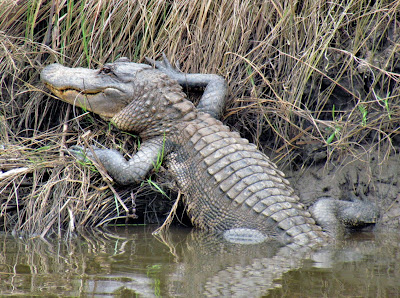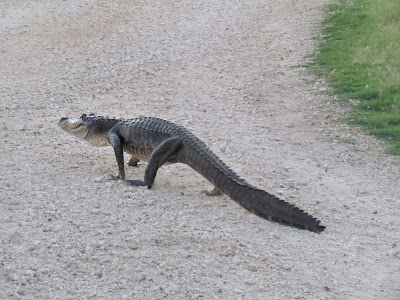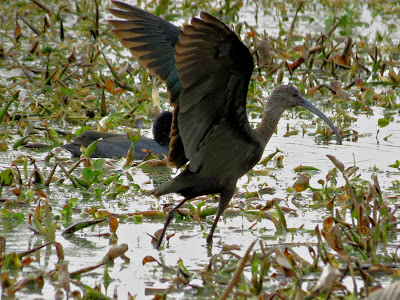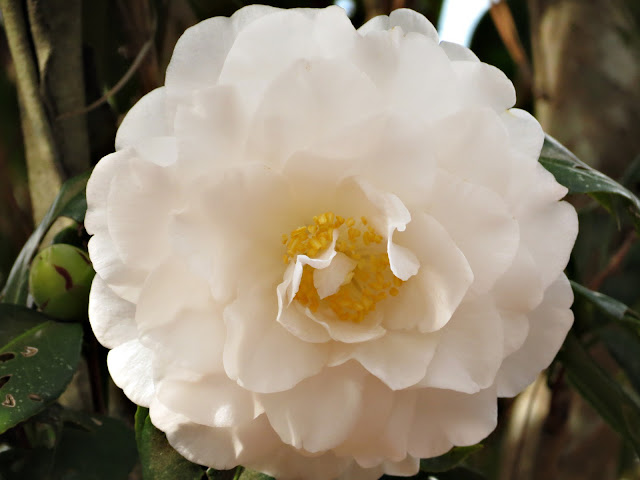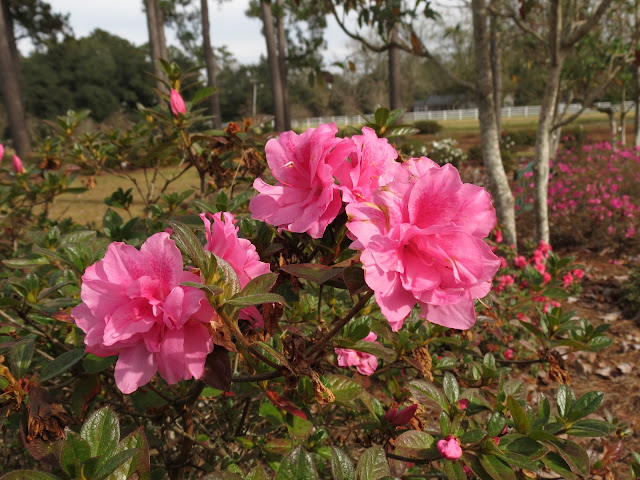I got out in Natalie's yard on Tuesday morning while the light was still beautiful. Almost immediately, I was distracted by some of the flowers and butterflies. I had to grab my camera and take the opening orange/gold rose. Then I saw another. Then a butterfly. Soon I was looking for more flowers and ended up taking pictures of most of them.
This is about the least flowers we ever have here. It's the dormant season, except for crops and flowers that like cold weather, like greens, pansys, petunias, and other bedding plants. The roses only have a couple of blooms at a time. Afew of the sages are still blooming and attracting bees, butterflies, and flies that mimic bumblebees.
So each bloom seems like a blessing and it's fun to visit them each day. And their insect visitors make them even more interesting.
Soon after Natalie moved here, we bought three roses at the
Antique Rose Emporium, a great place to shop for old and English roses. We picked the three varieties because they were supposed to grow well here in our high humidity. They have all done pretty well - don't need any spraying - but only have sporadic blooms right now. This orange one was just opening when I was taking pictures and I noticed it finished opening by the end of the photo session.The other two are yellow and their blooms are falling apart and not photogenic.
There are a few monarchs still flying around. Two weeks ago, just before I went to Louisiana, there were 27 monarch caterpillars feeding on several Mexican milkweed plants. When I got back, there were only a couple left, but most of the leaves were gone and the remaining caterpillars were eating on the seed pods and the stems. I found a few of the chrysalises while I was pruning and weeding.
Then I noticed this tiny drama. These two guys were having a gobbling contest to see who could eat the last leaf fastest. I threw the game to the caterpillar when I plucked and stomped the snail. By day's end, there were only two caterpillars and one was eating a seed pod.
We had a few other butterflies flying around this day. A Red Admiral who prefers to feed upside down was checking out the purple saliva.
The grass skippers are almost gone. The ones that are left love this red and yellow lantana that is scheduled to be moved, either when it stops blooming, or in late January. Got to move it before spring which will happen the middle of February so the neighboring rose bush can get its space back.
Paper whites usually start blooming in December. However, this is currently the only blooming one in the yard. Its relatives are all still in bud.
Blue mist flower has volunteered everywhere, much to the delight of the monarchs, queens and other butterflies. This is the last blooming mist plant in the yard. I'm busy cutting the seed heads back on the others to neaten up the garden.
The flowers of the abutilon bush (really a small tree) look like lanterns when they are back-lit.
The pansys that Zootie and I hauled home in a wagon after my car ended up in the shop on pick-up day are growing well and making faces.
And we are still getting a few eggplants - these are ready to harvest and will make a meal for two. The tomatoes are starting to color up. We have to pick them almost green or the squirrels feast on them. So far we have only parsley, dill, and cillantro growing but I hope to get several kinds of lettuce, mustard, spinich, Swiss chard, and bitter greens growing soon.
Before I knew it, an hour of fun was done and I was behind on gardening and getting my stuff packed up for 4 days of birding and paddling. I'll be doing the Bolivar Christmas Count, in the portion that is Anahuac NWR, on Thursday. AND I had had a previous thirty minutes of fun, walking on the beach with Natalie and two dogs, watching the sunrise, and enjoying the shore birds and sounds of the waves. So I was well gifted with all these little stocking stuffers.











